Forecasting Average Daily and Peak Electrical Load Based on Average Monthly Electricity Consumption Data
Abstract
1. Introduction
- In the absence of a centralized power supply;
- If it is not possible to connect to the centralized power supply system;
- For remote objects;
- For dachas, small houses, trade stalls;
- For remote warehouses, cabins, houses at recreation centers;
- For power, remote video surveillance and communication;
- For power supply of fire and security alarms;
- For weather stations;
- For auto coffee shops;
- For autotourism, etc.
2. Materials and Research Methodology
2.1. Statement of the Forecasting Problem
2.2. Forecasting of Power Consumption
- The clustering stage is performed as unsupervised learning, meaning that the risk of fitting to the desired result is excluded;
- The consistency of the clustering result can be checked visually by applying the PCA after clustering and visualizing the resulting clusters using a scatter plot;
- The construction of different models for individual meteorological factors allows for an increase in the accuracy of the forecast since each model is focused on certain operating conditions;
- Individual models may be more compact than a single one; therefore, fewer data can be used for their training and testing, and their work will be more predictable.
3. Electrical Load Forecasting
4. Comparison of Actual and Forecast Values
- An input layer;
- A hidden layer of 32 neurons with ReLU activation function;
- A hidden layer of 16 neurons with ReLU activation function;
- A hidden layer of 8 neurons with ReLU activation function;
- An output neuron with a sigmoidal activation function.
- The use of features obtained using PCA as additional input features, which made it possible to aggregate meteorological factors in many ways even before the use of regression models.
- The amount of data, which was not large enough for the effective use of neural networks; their more efficient operation probably requires data for 10–20 years.
5. Conclusions
Author Contributions
Funding
Data Availability Statement
Conflicts of Interest
References
- Blazakis, K.V.; Kapetanakis, T.N.; Stavrakakis, G.S. Effective Electricity Theft Detection in Power Distribution Grids Using an Adaptive Neuro Fuzzy Inference System. Energies 2020, 13, 3110. [Google Scholar] [CrossRef]
- Issi, F.; Kaplan, O. The Determination of Load Profiles and Power Consumptions of Home Appliances. Energies 2018, 11, 607. [Google Scholar] [CrossRef]
- Ziel, F. Load Nowcasting: Predicting Actuals with Limited Data. Energies 2020, 13, 1443. [Google Scholar] [CrossRef]
- Foltyn, L.; Vysocký, J.; Prettico, G.; Běloch, M.; Praks, P.; Fulli, G. OPF solution for a real Czech urban meshed distribution network using a genetic algorithm. Sustain. Energy Grids Netw. 2021, 26, 100437. [Google Scholar] [CrossRef]
- Ahmad, A.; Javaid, N.; Mateen, A.; Awais, M.; Khan, Z.A. Short-Term Load Forecasting in Smart Grids: An Intelligent Modular Approach. Energies 2019, 12, 164. [Google Scholar] [CrossRef]
- Ahmed, R.; Sreeram, V.; Mishra, Y.; Arif, M.D. A review and evaluation of the state-of-the-art in PV solar power forecasting: Techniques and optimization. Renew. Sustain. Energy Rev. 2020, 124, 109792. [Google Scholar] [CrossRef]
- Angelini, G.; De Angelis, L. Efficiency of online football betting markets. Int. J. Forecast. 2019, 35, 712–721. [Google Scholar] [CrossRef]
- Apiletti, D.; Pastor, E. Correlating espresso quality with coffee-machine parameters by means of association rule mining. Electronics 2020, 9, 100. [Google Scholar] [CrossRef]
- Asimakopoulos, S.; Paredes, J.; Warmedinger, T. Real-time fiscal forecasting using mixed-frequency data. Scand. J. Econ. 2020, 122, 369–390. [Google Scholar] [CrossRef]
- Babai, M.; Dallery, Y.; Boubaker, S.; Kalai, R. A new method to forecast intermittent demand in the presence of inventory obsolescence. Int. J. Prod. Econ. 2019, 209, 30–41. [Google Scholar] [CrossRef]
- Barker, J. Machine learning in M4: What makes a good unstructured model? Int. J. Forecast. 2020, 36, 150–155. [Google Scholar] [CrossRef]
- Boylan, J.; Syntetos, A. Intermittent Demand Forecasting—Context, Methods and Applications; Wiley: Hoboken, NJ, USA, 2021. [Google Scholar] [CrossRef]
- Burton, J.W.; Stein, M.; Jensen, T.B. A systematic review of algorithm aversion in augmented decision making. J. Behav. Decis. Mak. 2020, 33, 220–239. [Google Scholar] [CrossRef]
- Chan, F.; Pauwels, L.L. Some theoretical results on forecast combinations. Int. J. Forecast. 2018, 34, 64–74. [Google Scholar] [CrossRef]
- Choudhury, A.; Urena, E. Forecasting hourly emergency department arrival using time series analysis. Br. J. Heal. Manag. 2020, 26, 34–43. [Google Scholar] [CrossRef]
- Diebold, F.X.; Shin, M. Machine learning for regularized survey forecast combination: Partially-egalitarian lasso and its derivatives. Int. J. Forecast. 2019, 35, 1679–1691. [Google Scholar] [CrossRef]
- Sergeev, N.N.; Matrenin, P.V. Enhancing Efficiency of Ensemble Machine Learning Models for Short-Term Load Forecasting through Feature Selection. In Proceedings of the 2022 IEEE 23rd International Conference of Young Professionals in Electron Devices and Materials (EDM), Altai, Russia, 30 June–4 July 2022; IEEE: Washington, DC, USA, 2022; pp. 368–371. [Google Scholar]
- Fan, Y.; Nowaczyk, S.; Rögnvaldsson, T. Transfer learning for remaining useful life prediction based on consensus self-organizing models. Reliab. Eng. Syst. Saf. 2020, 203, 107098. [Google Scholar] [CrossRef]
- Fezzi, C.; Mosetti, L. Size matters: Estimation sample length and electricity price forecasting accuracy. Energy J. 2020, 41, 231–254. [Google Scholar] [CrossRef]
- Goltsos, T.E.; Syntetos, A.A.; van der Laan, E. Forecasting for remanufacturing: The effects of serialization. J. Oper. Manag. 2019, 65, 447–467. [Google Scholar] [CrossRef]
- Grushka-Cockayne, Y.; Jose, V.R.R. Combining prediction intervals in the M4 competition. Int. J. Forecast. 2020, 36, 178–185. [Google Scholar] [CrossRef]
- Hewamalage, H.; Bergmeir, C.; Bandara, K. Recurrent neural networks for time series forecasting: Current status and future directions. Int. J. Forecast. 2021, 37, 388–427. [Google Scholar] [CrossRef]
- Hong, T.; Pinson, P. Energy forecasting in the big data world. Int. J. Forecast. 2019, 35, 1387–1388. [Google Scholar] [CrossRef]
- Senyuk, M.; Safaraliev, M.; Gulakhmadov, A.; Ahyoev, J. Application of the Conditional Optimization Method for the Synthesis of the Law of Emergency Control of a Synchronous Generator Steam Turbine Operating in a Complex-Closed Configuration Power System. Mathematics 2022, 10, 3979. [Google Scholar] [CrossRef]
- Tavarov, S.S.; Sidorov, A.I.; Sultonov, O.O. Modelling the operating mode of the urban electrical network and developing a method for managing these modes. Math. Model. Eng. Probl. 2021, 8, 813–818. [Google Scholar] [CrossRef]
- Shiralievich, T.S.; Ivanovic, S.A.; Mamanazarovna, S.S.; Olimovich, S.O.; Yunusov, P. Learning algorithm of artificial neural network factor forecasting power consumption of users. Bull. Electr. Eng. Informatics 2022, 11, 602–612. [Google Scholar] [CrossRef]
- Sidorov, A.; Tavarov, S. Method for forecasting electric consumption for household users in the conditions of the Republic of Tajikistan. Int. J. Sustain. Dev. Plan. 2020, 15, 569–574. [Google Scholar] [CrossRef]
- Ungureanu, S.; Topa, V.; Cziker, A.C. Deep Learning for Short-Term Load Forecasting-Industrial Consumer Case Study. Appl. Sci. 2021, 11, 10126. [Google Scholar] [CrossRef]
- Grant, J.; Eltoukhy, M.; Asfour, S. Short-Term Electrical Peak Demand Forecasting in a Large Government Building Using Artificial Neural Networks. Energies 2014, 7, 1935–1953. [Google Scholar] [CrossRef]
- Tavarov, S.S.; Zicmane, I.; Beryozkina, S.; Praveenkumar, S.; Safaraliev, M.; Shonazarova, S. Evaluation of the Operating Modes of the Urban Electric Networks in Dushanbe City, Tajikistan. Inventions 2022, 7, 107. [Google Scholar] [CrossRef]
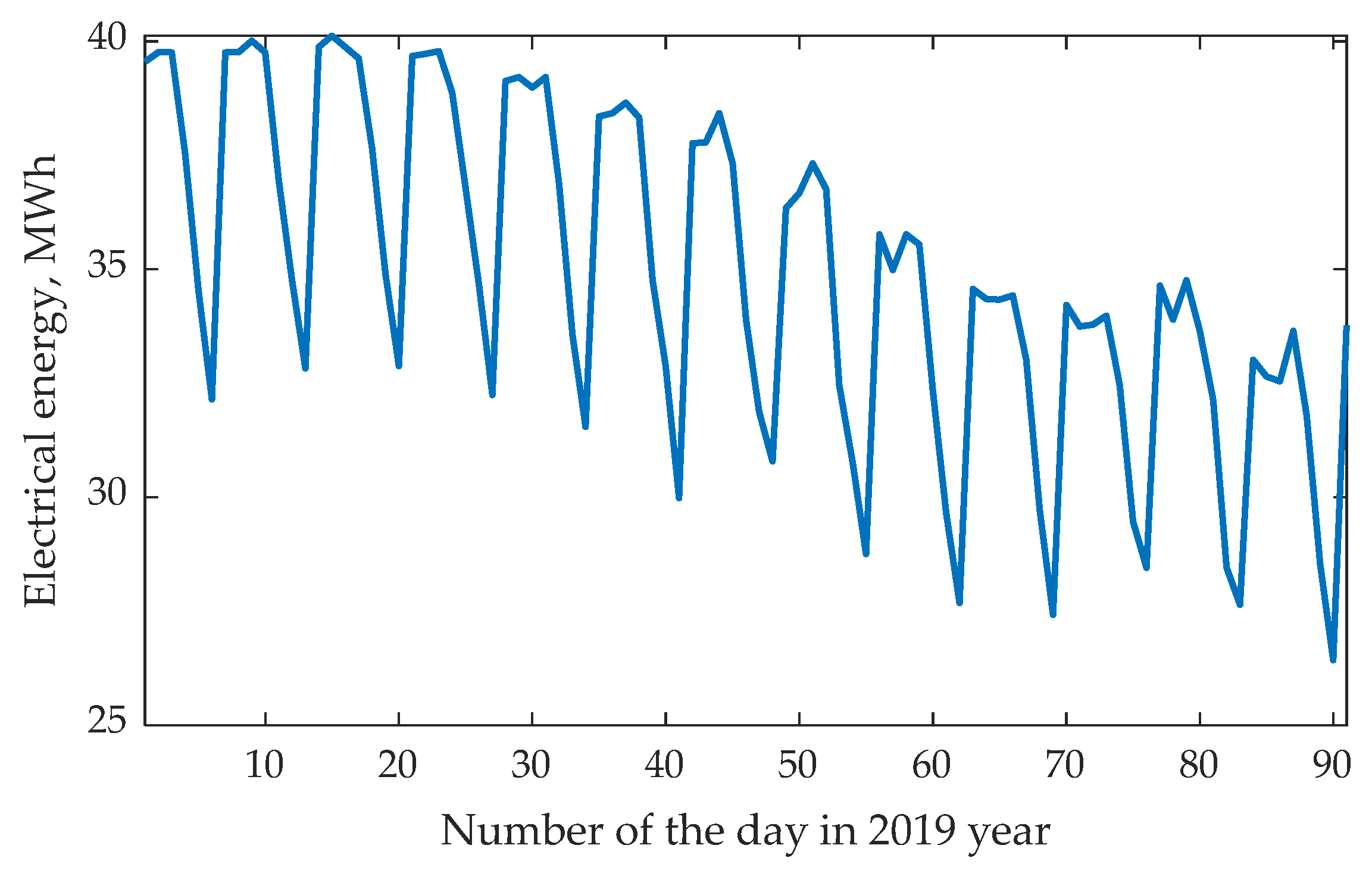

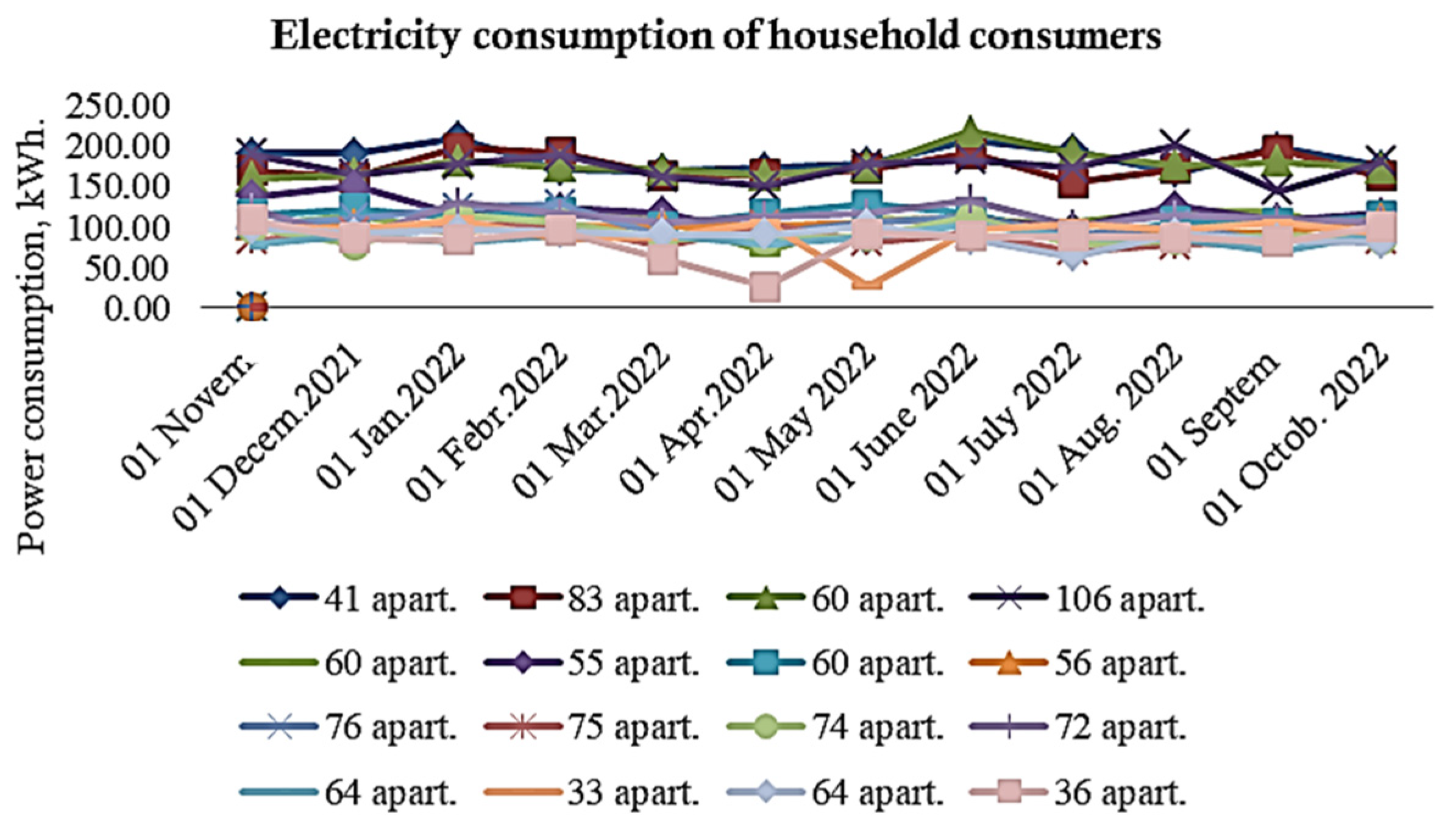

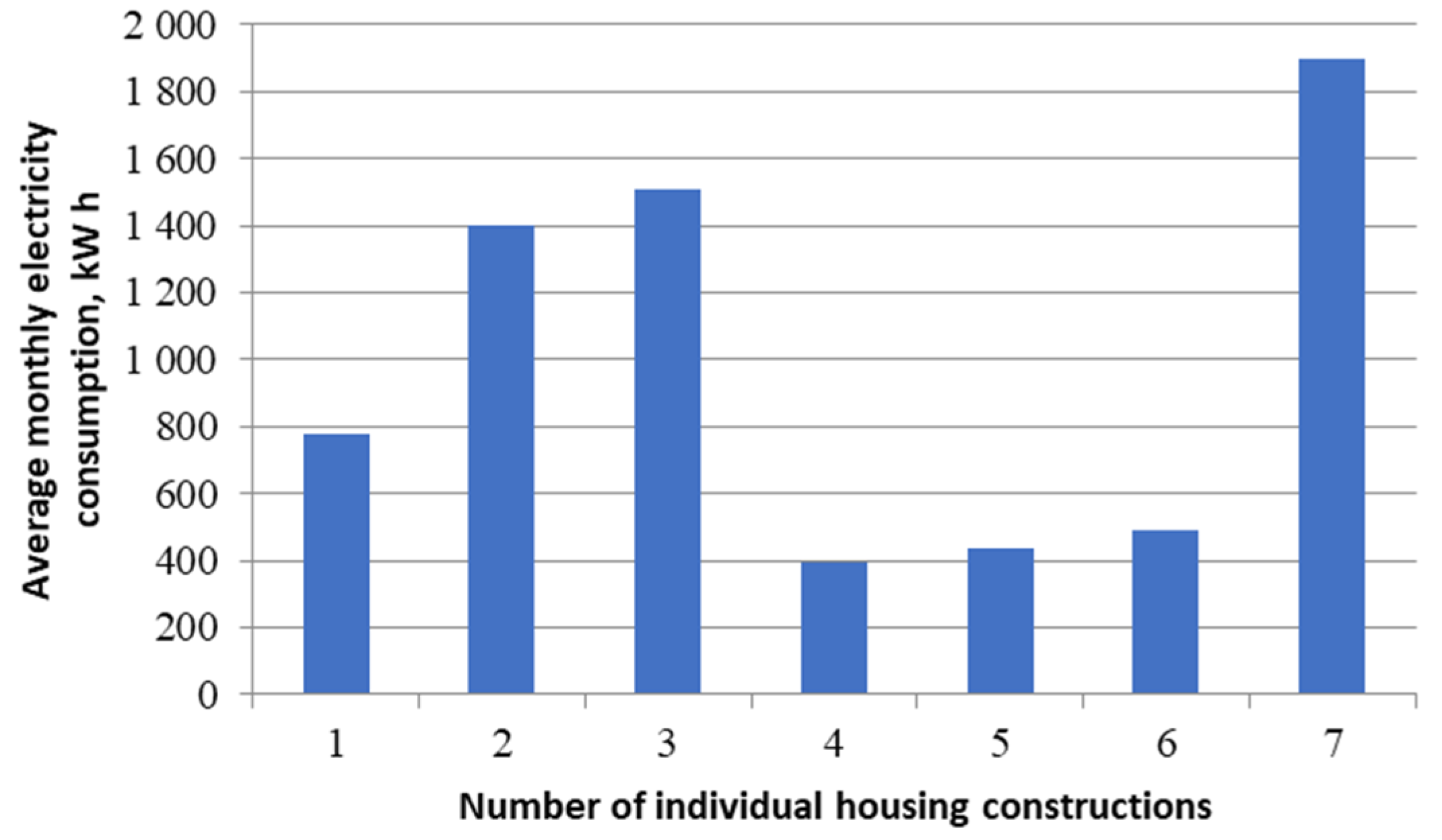
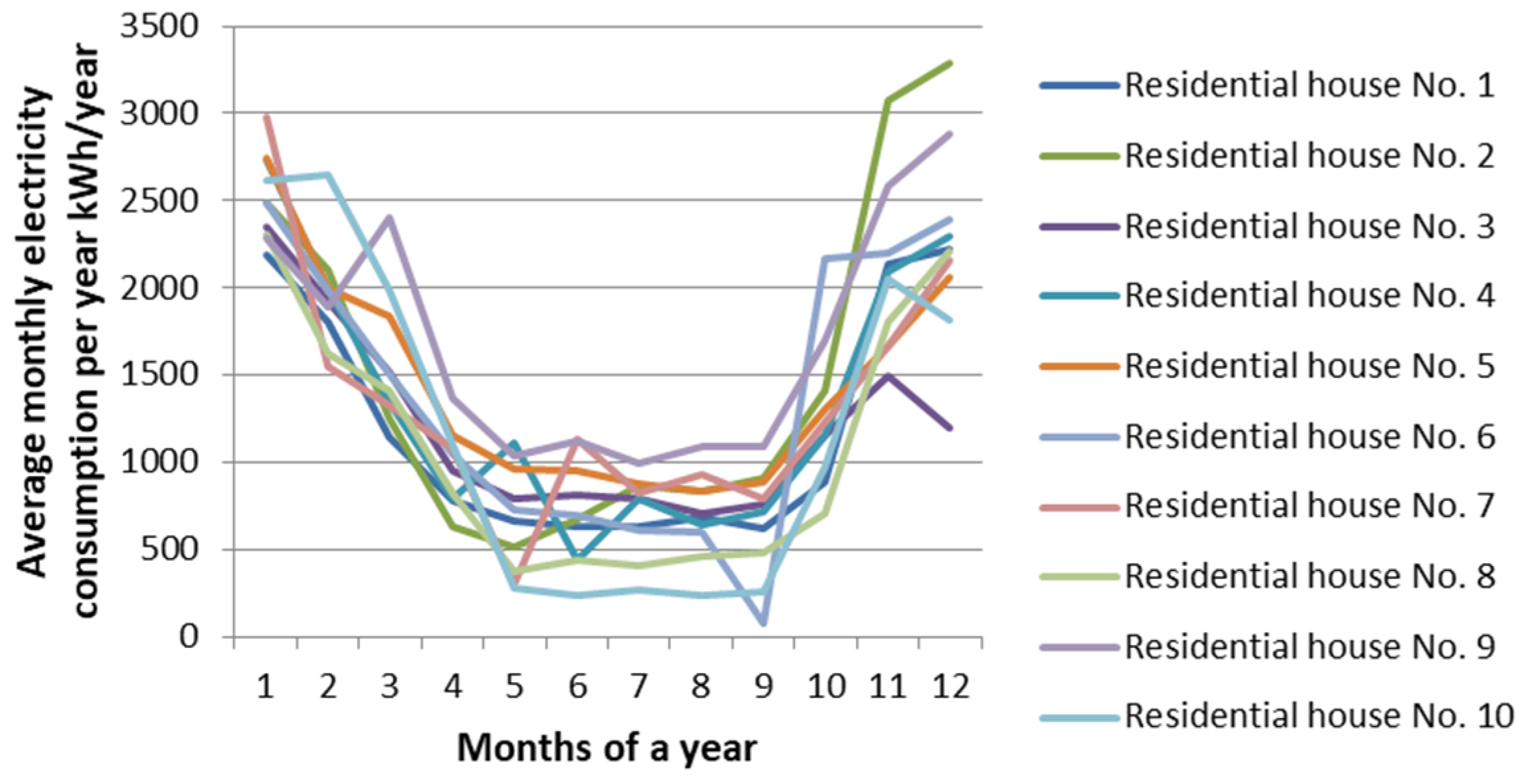
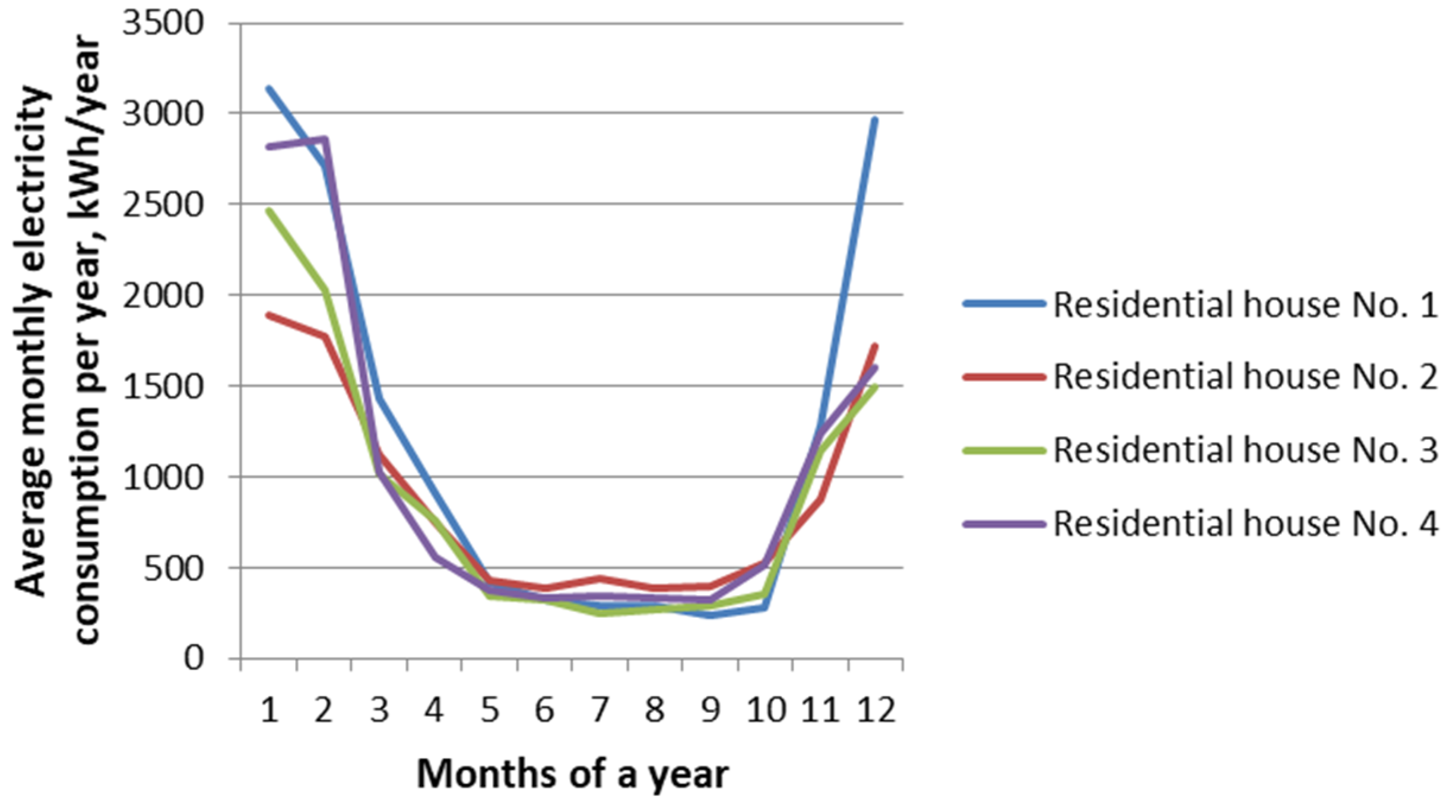
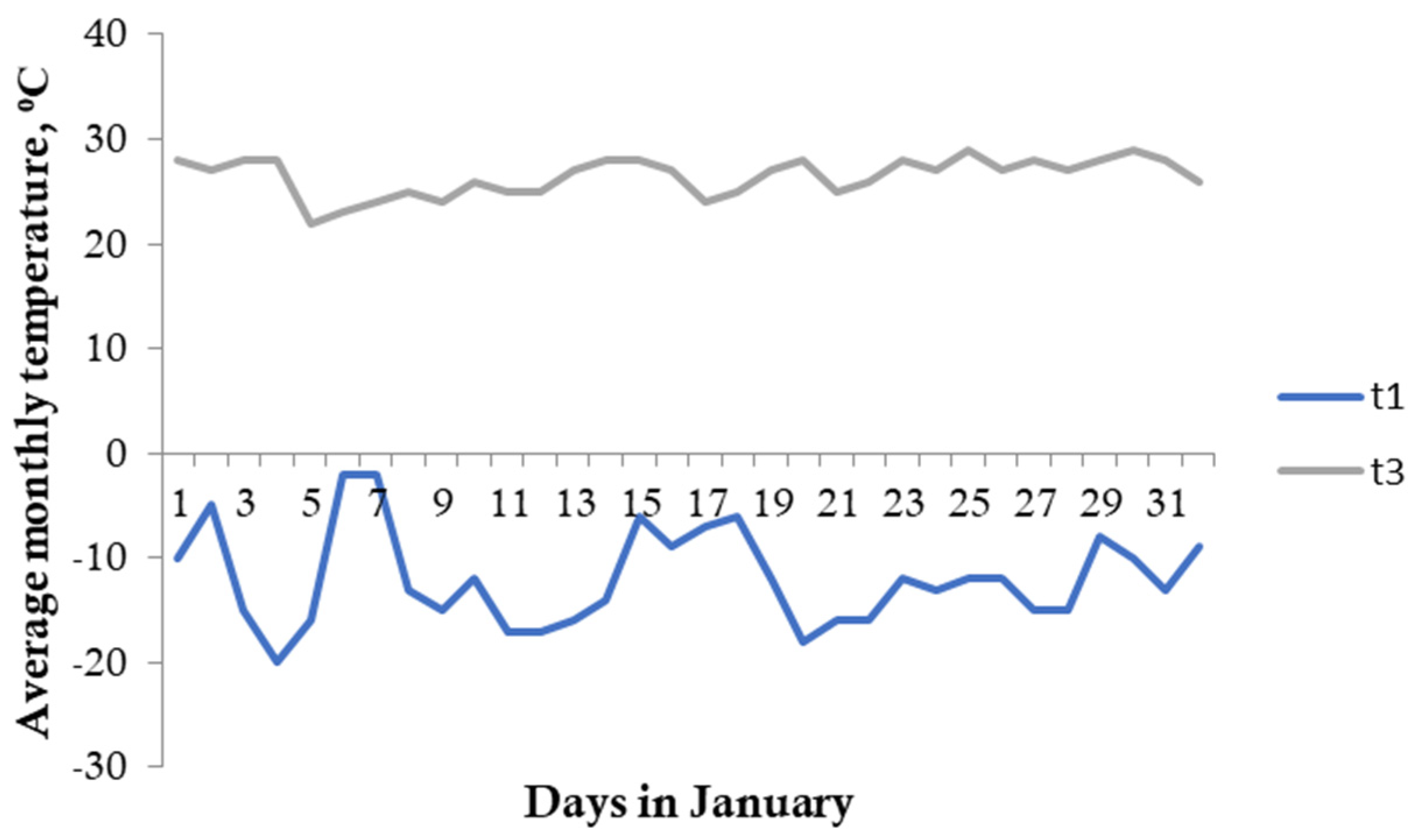

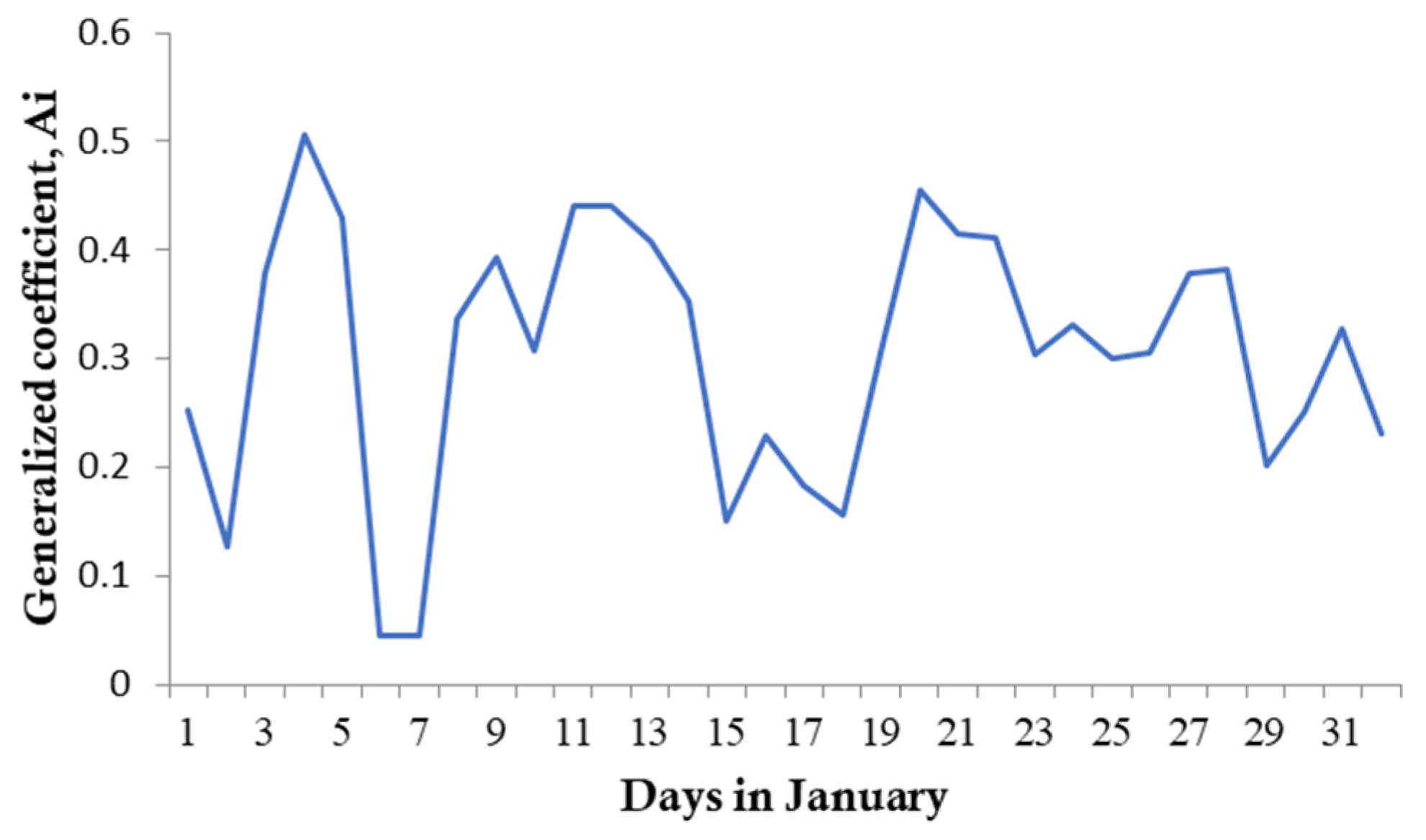
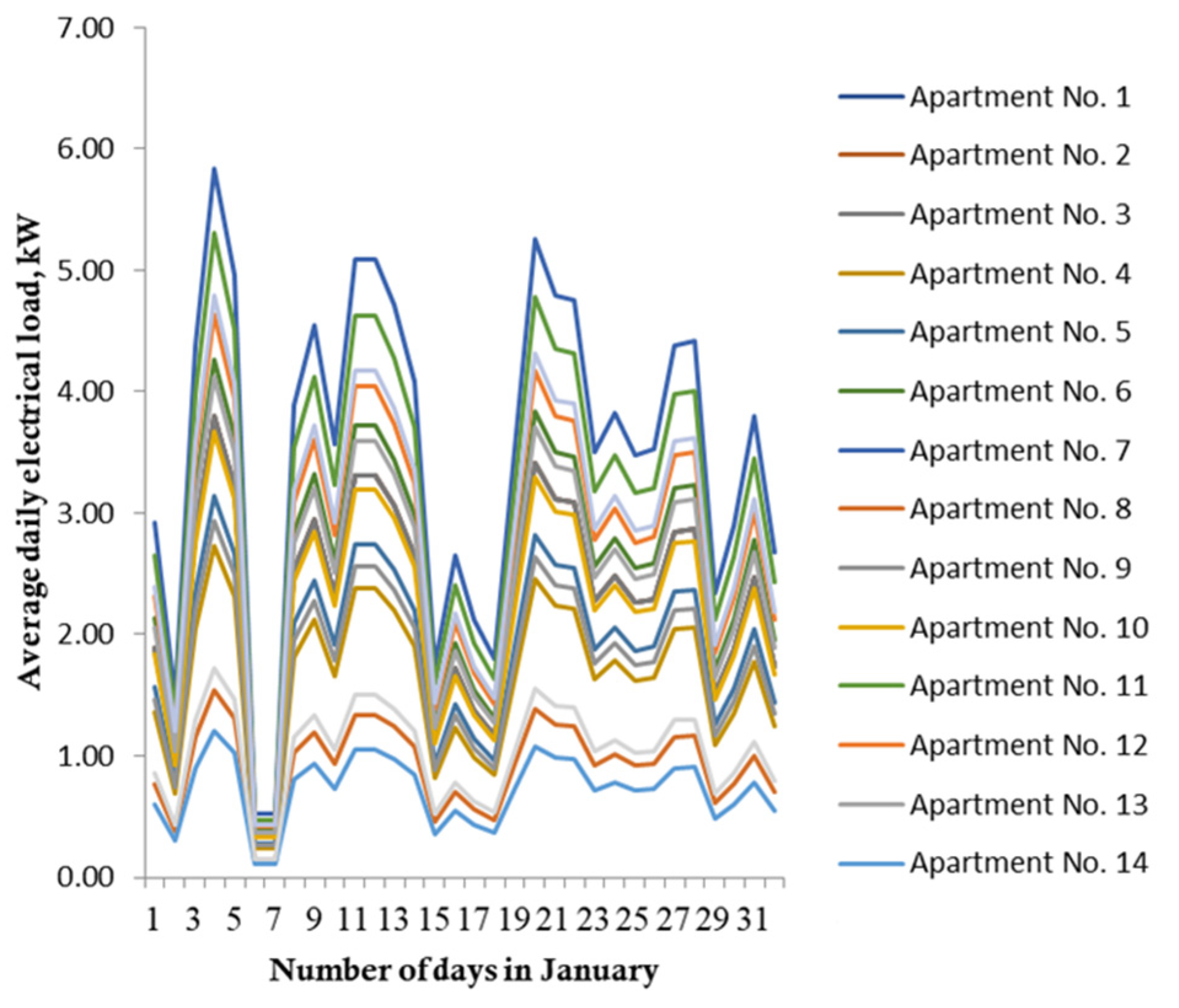

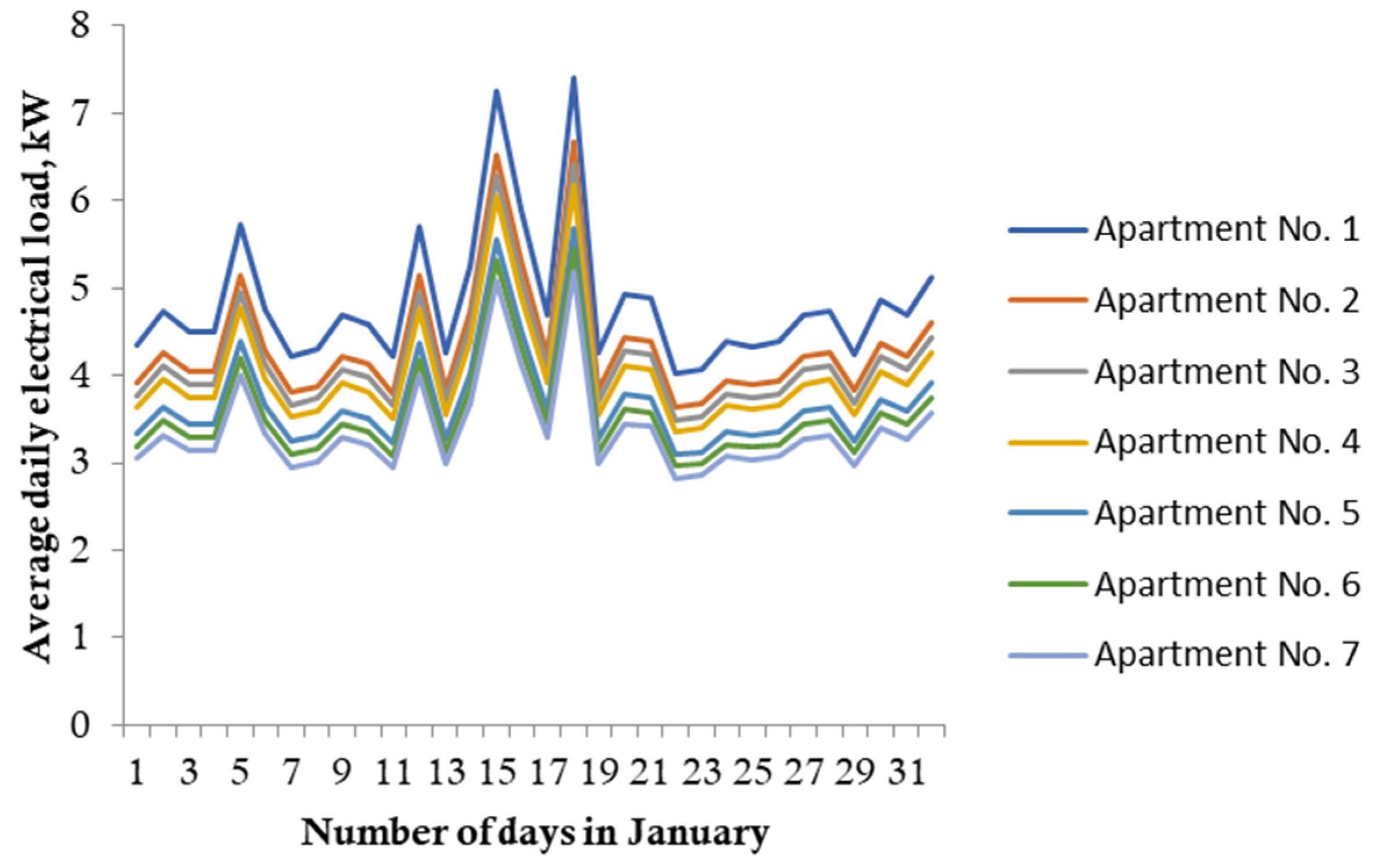
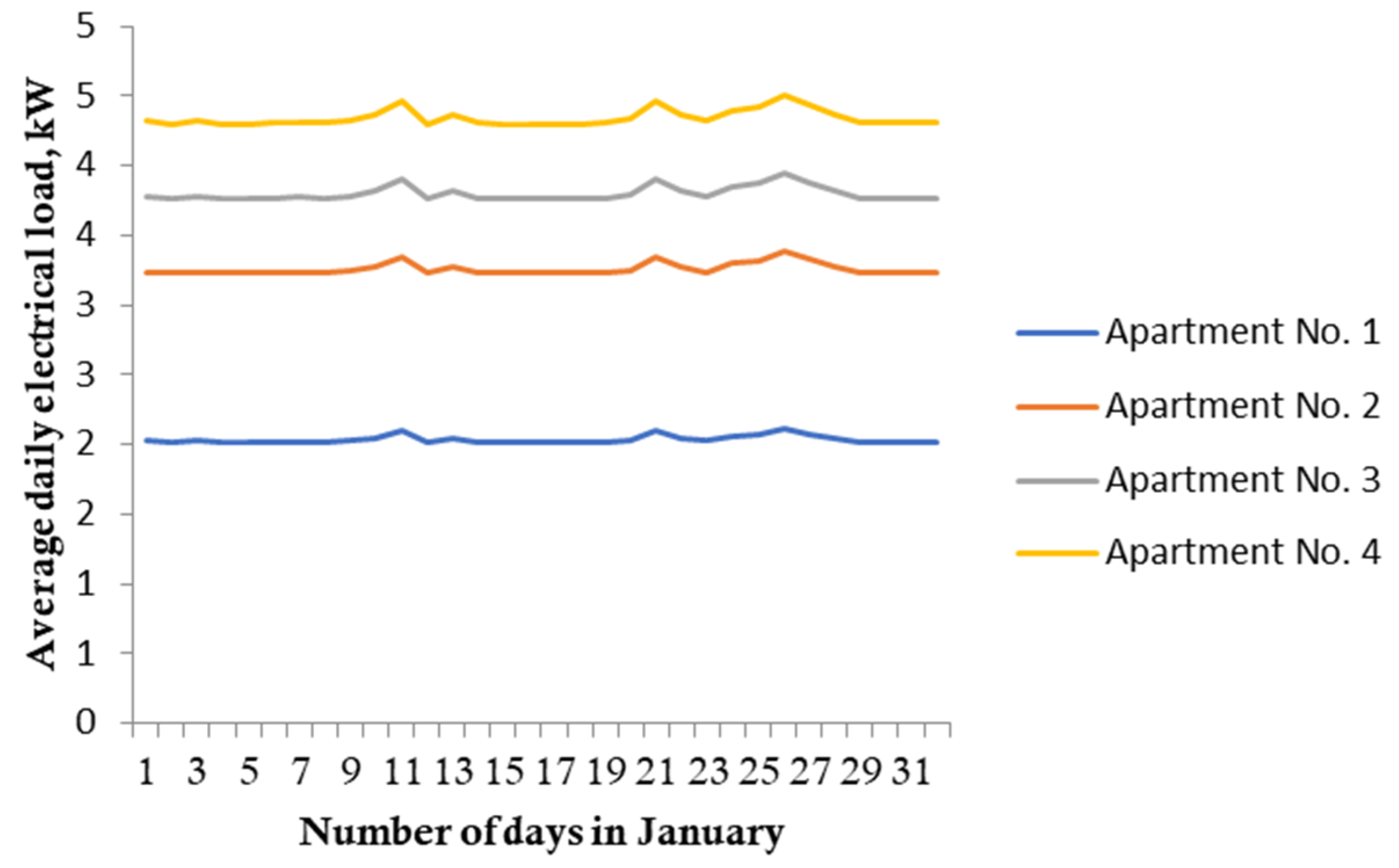
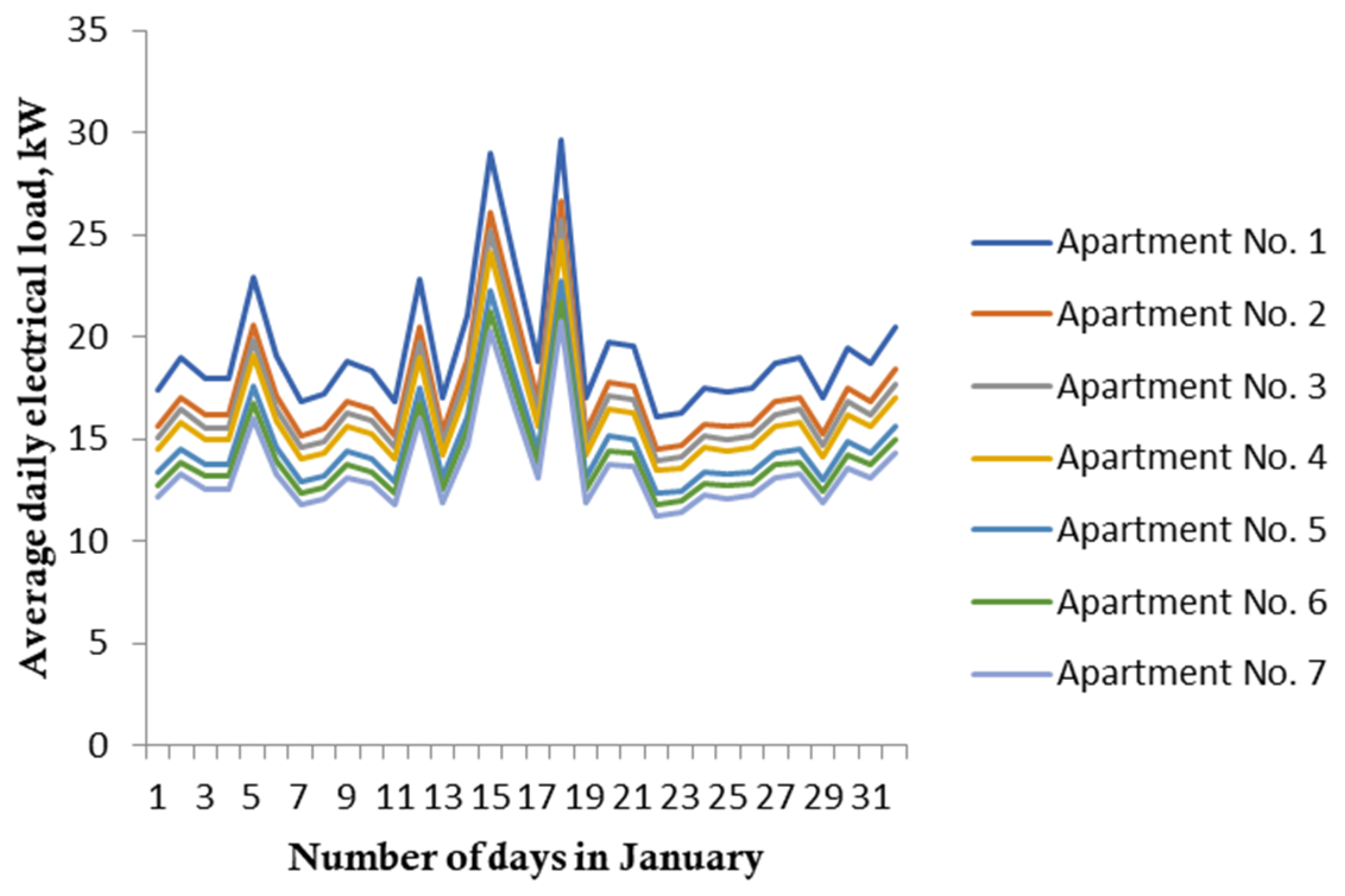
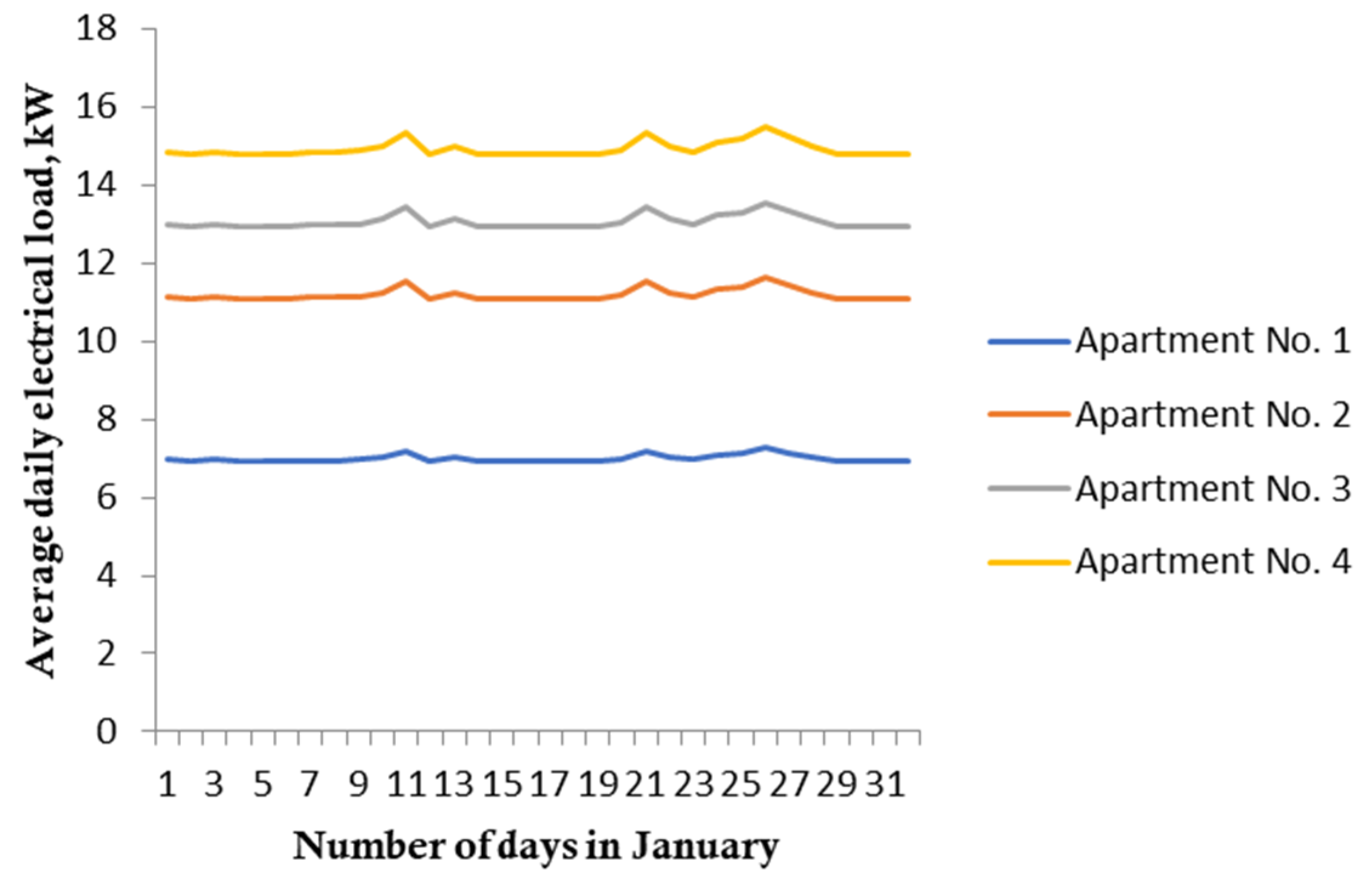
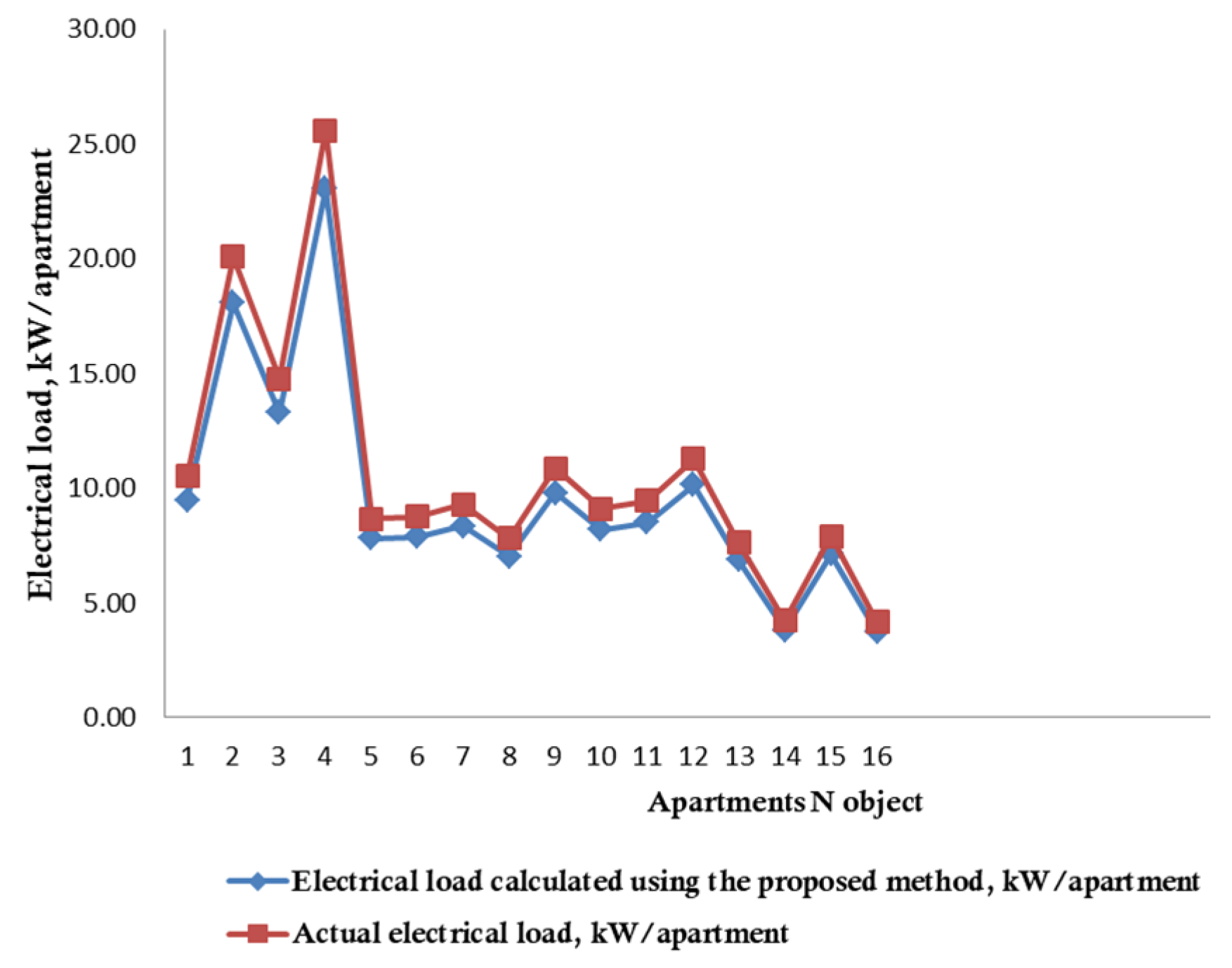
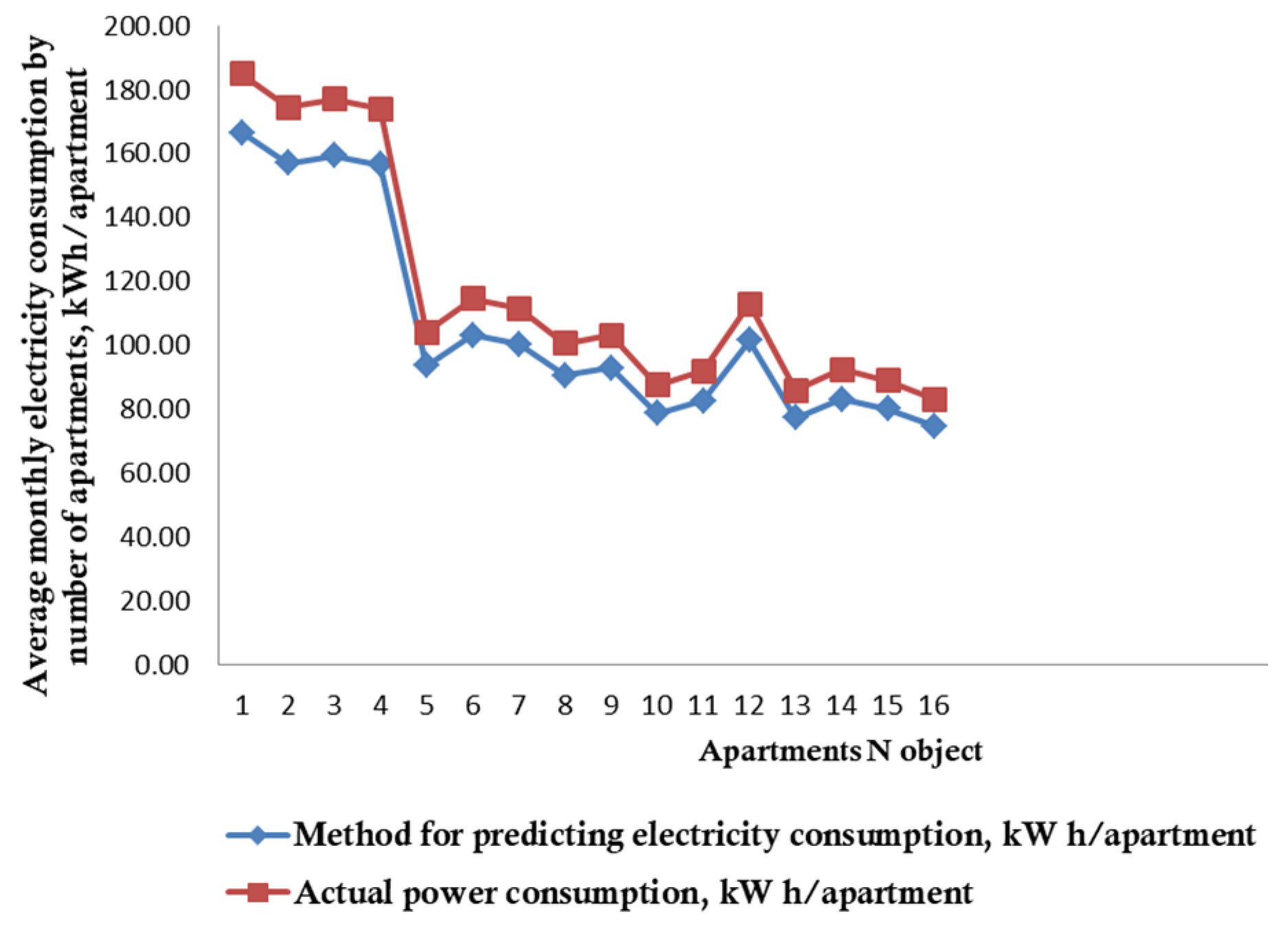

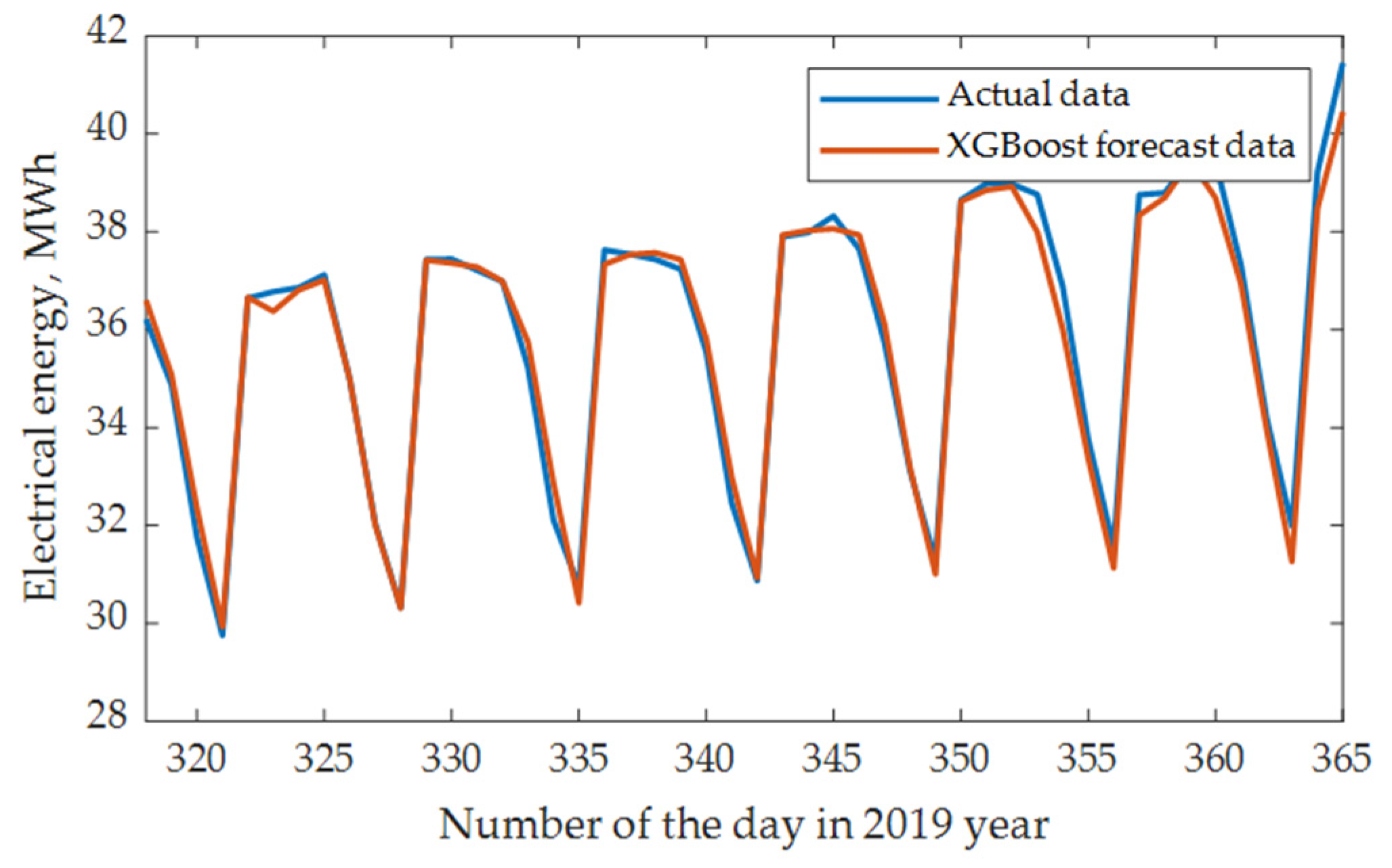
| Feature | Correlation Coefficient |
|---|---|
| Year | 0.70 |
| Month | −0.09 |
| Day | 0.01 |
| Day of the week | −0.51 |
| Temperature | −0.33 |
| Humidity | 0.20 |
| Wind speed | −0.37 |
| Cloud cover | 0.01 |
Disclaimer/Publisher’s Note: The statements, opinions and data contained in all publications are solely those of the individual author(s) and contributor(s) and not of MDPI and/or the editor(s). MDPI and/or the editor(s) disclaim responsibility for any injury to people or property resulting from any ideas, methods, instructions or products referred to in the content. |
© 2025 by the authors. Licensee MDPI, Basel, Switzerland. This article is an open access article distributed under the terms and conditions of the Creative Commons Attribution (CC BY) license (https://creativecommons.org/licenses/by/4.0/).
Share and Cite
Tavarov, S.; Sidorov, A.; Glotova, N. Forecasting Average Daily and Peak Electrical Load Based on Average Monthly Electricity Consumption Data. Electricity 2025, 6, 26. https://doi.org/10.3390/electricity6020026
Tavarov S, Sidorov A, Glotova N. Forecasting Average Daily and Peak Electrical Load Based on Average Monthly Electricity Consumption Data. Electricity. 2025; 6(2):26. https://doi.org/10.3390/electricity6020026
Chicago/Turabian StyleTavarov, Saidjon, Aleksandr Sidorov, and Natalia Glotova. 2025. "Forecasting Average Daily and Peak Electrical Load Based on Average Monthly Electricity Consumption Data" Electricity 6, no. 2: 26. https://doi.org/10.3390/electricity6020026
APA StyleTavarov, S., Sidorov, A., & Glotova, N. (2025). Forecasting Average Daily and Peak Electrical Load Based on Average Monthly Electricity Consumption Data. Electricity, 6(2), 26. https://doi.org/10.3390/electricity6020026







